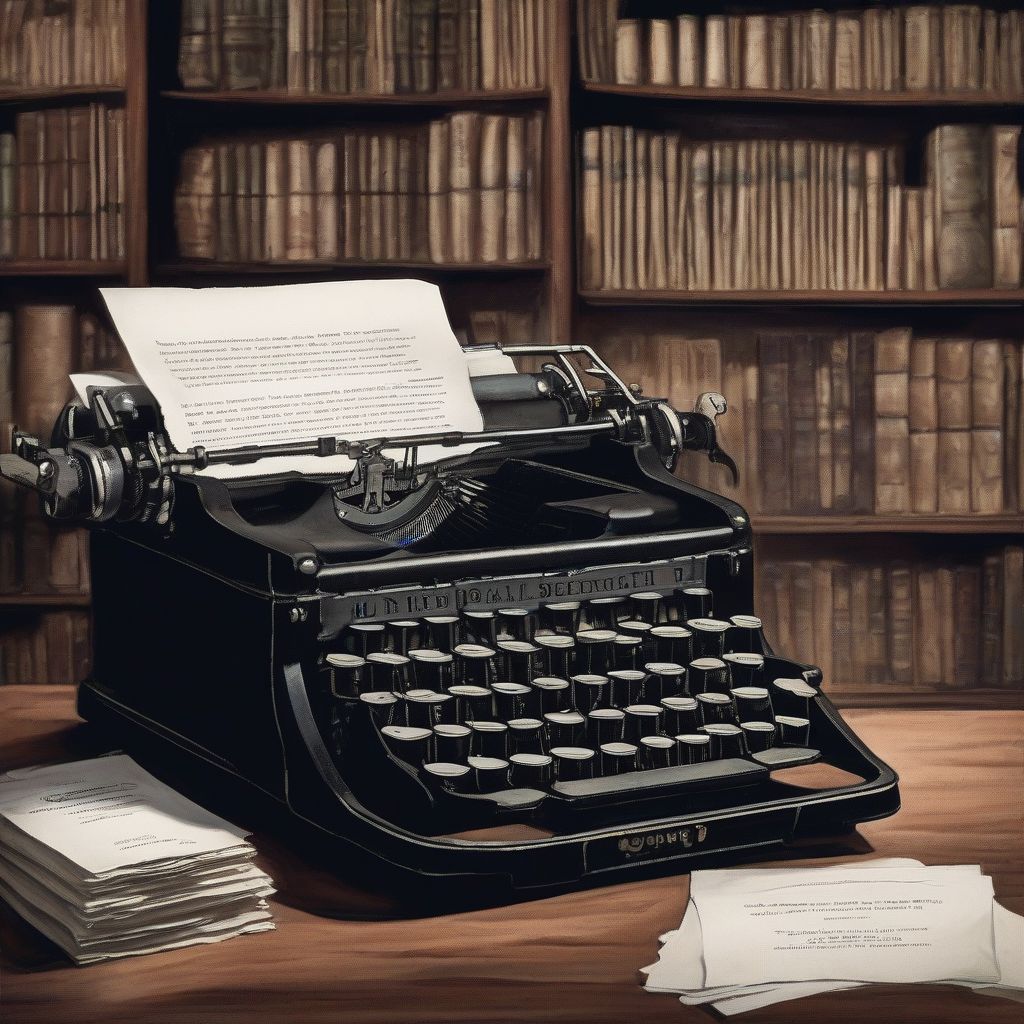“The sun also rises,” and so does the literary legacy of Ernest Hemingway. His crisp prose, stark realism, and exploration of complex themes continue to captivate readers generations after his death. But what exactly defines Hemingway’s style, and how has he impacted the literary world? Let’s dive into the world of this iconic American author.
Decoding the Hemingway Style
Hemingway’s writing is instantly recognizable. It’s characterized by a unique blend of simplicity and depth, often described as “the iceberg theory.” Like an iceberg, the majority of the story lies beneath the surface, implied rather than explicitly stated. This minimalist approach forces the reader to actively participate in the narrative, drawing their own conclusions and interpreting the underlying emotions.
Key Elements of Hemingway’s Prose
- Concise Language: Short, declarative sentences are a hallmark of Hemingway’s style. He avoids adverbs and adjectives, opting for strong verbs and nouns that paint vivid pictures with minimal words. Think “He ate the bread” instead of “He hungrily devoured the crusty, warm loaf of bread.”
- Iceberg Theory: As mentioned earlier, Hemingway’s writing leaves much unsaid. The subtext and underlying meaning are conveyed through dialogue, setting, and character actions, creating a powerful sense of realism.
- Dialogue-Driven Narrative: Hemingway masterfully uses dialogue to reveal character, advance the plot, and build tension. His dialogue is natural and often clipped, reflecting the way people speak in real-life situations.
- Themes of War, Loss, and Masculinity: Hemingway’s personal experiences heavily influenced his writing. His stories often explore the psychological and emotional toll of war, the complexities of masculinity, and the struggle to find meaning in a world marked by loss and disillusionment.
Hemingway’s Enduring Impact on Literature
Hemingway’s influence on 20th and 21st-century literature is undeniable. He revolutionized the way stories were told, paving the way for a generation of writers who embraced minimalism and realism.
Shaping Modern Prose
Hemingway’s concise and direct style has had a profound impact on how we write and read. His influence can be seen in the works of countless authors, from Cormac McCarthy to Raymond Carver. He proved that brevity could be just as powerful, if not more so, than elaborate prose.
Impact on Journalism
Before he became a novelist, Hemingway worked as a journalist. His journalistic background undoubtedly contributed to his lean and objective writing style. This journalistic influence can be seen in the way he structures his narratives, focusing on concrete details and avoiding sentimentalism.
Exploring Universal Themes
Hemingway’s stories grapple with universal themes that continue to resonate with readers today. His exploration of masculinity, loss, and the search for meaning in a chaotic world has made his work timeless and enduring.
Hemingway’s Legacy: More Than Just Words
Hemingway’s impact extends beyond his literary achievements. He became a cultural icon, embodying a certain image of masculinity and adventure. His life, as much as his writing, contributed to his legend.
The Hemingway Hero
The “Hemingway hero” is a recurring archetype in his work – a stoic, resilient character who faces adversity with grace and courage. This figure has become a cultural touchstone, influencing the portrayal of masculinity in literature and film.
A Life of Adventure
Hemingway’s adventurous life – from his experiences as an ambulance driver in World War I to his travels as a journalist and sportsman – fueled his writing and contributed to his mystique. He became a symbol of a life lived fully and intensely.
 Hemingway's Writing Style
Hemingway's Writing Style
Exploring Hemingway’s Works
To truly appreciate Hemingway’s impact, it’s essential to delve into his writing. Here are some key works to consider:
- The Sun Also Rises (1926): This novel explores the lives of a group of American expatriates in post-World War I Europe, grappling with disillusionment and the search for meaning.
- A Farewell to Arms (1929): A semi-autobiographical novel set during World War I, it tells a poignant love story against the backdrop of war and loss.
- For Whom the Bell Tolls (1940): Set during the Spanish Civil War, this novel delves into themes of courage, sacrifice, and the complexities of war.
- The Old Man and the Sea (1952): This Pulitzer Prize-winning novella tells the story of an aging Cuban fisherman’s epic struggle with a giant marlin.
Conclusion: A Literary Giant’s Lasting Influence
Ernest Hemingway’s impact on literature is undeniable. His distinctive style, characterized by concise language, the iceberg theory, and dialogue-driven narratives, has influenced generations of writers. His exploration of universal themes – war, loss, masculinity, and the search for meaning – continues to resonate with readers today. By understanding the key elements of Hemingway’s style and exploring his major works, we can gain a deeper appreciation for his enduring legacy and his contribution to the literary landscape. What are your thoughts on Hemingway’s impact? Share your favorite Hemingway novel or short story in the comments below!



